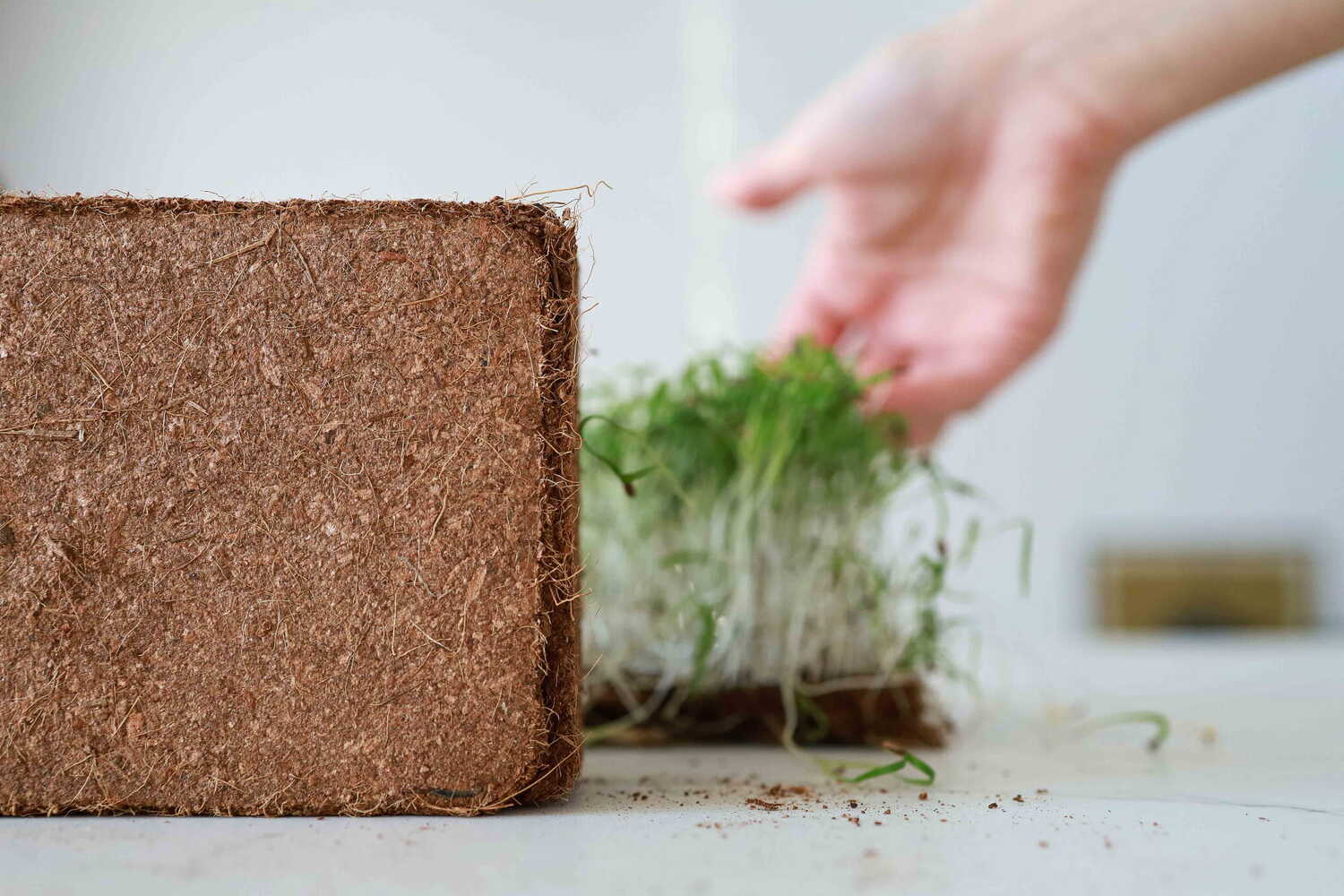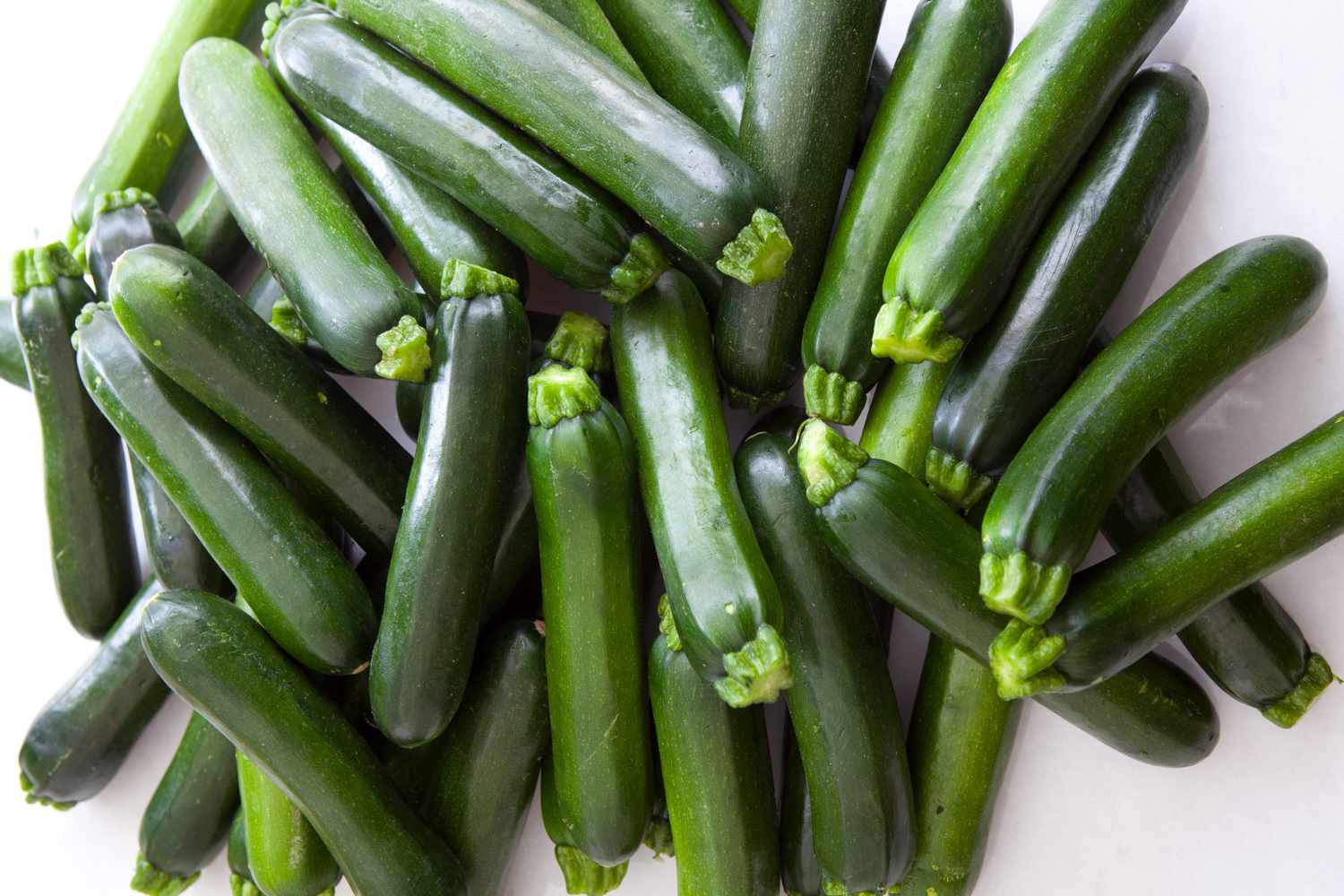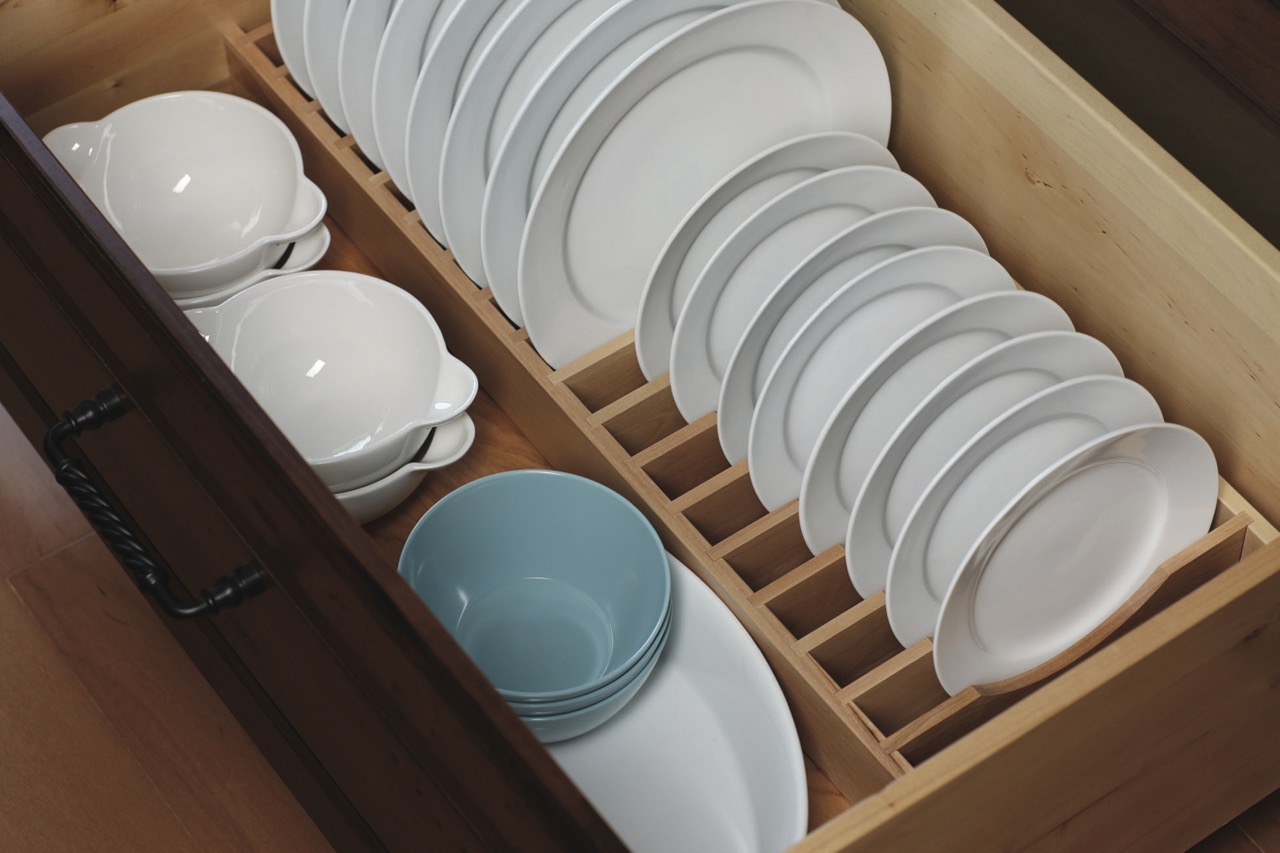

Articles
How To Store Coco Coir
Modified: December 7, 2023
Learn how to properly store coco coir in this informative article. Find out the best practices and tips for keeping your coco coir fresh and ready for use.
(Many of the links in this article redirect to a specific reviewed product. Your purchase of these products through affiliate links helps to generate commission for Storables.com, at no extra cost. Learn more)
Introduction
Welcome to the world of coco coir! If you are an avid gardener or a plant enthusiast, you have probably come across this versatile growing medium. Coco coir, also known as coco peat, is a natural product derived from the fibrous husk of coconuts. It has gained popularity in recent years as a sustainable and environmentally friendly alternative to traditional soil-based growing methods.
In this article, we will explore the ins and outs of storing coco coir to ensure its quality and longevity. Whether you are a commercial grower stocking up on bulk quantities or a home gardener looking to make the most of your coco coir purchase, proper storage practices are essential to maintain its effectiveness.
But first, let’s understand what exactly coco coir is and why it has become a preferred growing medium for many plant enthusiasts.
Key Takeaways:
- Properly storing coco coir is essential to maintain its quality and effectiveness. From preparing it for storage to choosing the right conditions, following these guidelines ensures optimal performance for your plants.
- Rehydrating coco coir after storage is a straightforward process that restores its water-holding capacity. By following the steps outlined, you can bring the coco coir back to its optimal state for use as a growing medium.
Read more: Coir Soil Mix: How Long To Hydrate
What is Coco Coir?
Coco coir is a natural, fibrous material that is derived from the husk of coconuts. The husk, which was once considered waste material, is now being repurposed into a valuable resource for gardening and agriculture. Coco coir has become increasingly popular as a growing medium due to its numerous benefits.
Processed coco coir is typically available in the form of compressed bricks, blocks, or loose fibers. It is a brown, lightweight material that retains moisture well while allowing for adequate drainage. This unique combination of properties makes it an ideal growing medium for a wide range of plants.
One of the key reasons why coco coir has gained popularity is its sustainability. As a byproduct of the coconut industry, coco coir repurposes what would otherwise be discarded, reducing waste and resource consumption. Unlike peat moss, which is obtained by mining and depletes natural peat bogs, coco coir is a renewable resource that can be produced without damaging delicate ecosystems.
In addition to its eco-friendly nature, coco coir offers several benefits for plants. It has excellent water retention capabilities, allowing plants to maintain optimal moisture levels. At the same time, it also promotes good drainage, preventing waterlogging and the risk of root rot.
Coco coir also has a neutral pH level, making it a versatile option for a variety of plants. Unlike some other growing media, coco coir does not release harmful chemicals or alter the pH of the soil, providing a stable and balanced environment for plant growth.
Furthermore, coco coir is naturally resistant to fungal infections, pests, and diseases, reducing the need for chemical treatments. This makes it a safe and healthy option for both indoor and outdoor gardening.
Now that we have a better understanding of what coco coir is and why it is so popular, let’s explore how to store it properly to maintain its quality and effectiveness.
Benefits of Coco Coir
Coco coir, also known as coco peat, offers a range of benefits that make it a preferred choice for gardeners and growers. Let’s dive into some of the key advantages of using coco coir as a growing medium:
1. Excellent Water Retention
Coco coir has excellent water-holding capacity, allowing it to retain moisture for extended periods. This ensures that plants have access to a steady supply of water, reducing the risk of underwatering and providing a buffer against drought conditions.
2. Improved Drainage
In addition to its water retention capabilities, coco coir also provides good drainage. It allows excess water to pass through, preventing overwatering and waterlogged roots. This helps to maintain optimal oxygen levels around the roots and reduces the risk of root rot.
Read more: How To Store Store-Bought Bread
3. Balanced pH Levels
Coco coir has a neutral pH level, which means it does not significantly alter the acidity or alkalinity of the growing medium. This provides a stable and balanced environment for plant roots, allowing for efficient nutrient uptake and optimal plant growth.
4. Enhanced Nutrient Retention
Coco coir has a high cation exchange capacity (CEC), which means it has the ability to attract and retain nutrients. This allows plants to access essential nutrients over an extended period, reducing the frequency of fertilization and ensuring steady and healthy plant growth.
5. Reduced Pest and Disease Risk
Coco coir is naturally resistant to pests, fungi, and diseases. This reduces the need for chemical treatments and creates a healthier growing environment for plants. Additionally, coco coir does not attract insects or harbor harmful pathogens, further minimizing the risk of pest infestations and plant diseases.
6. Sustainable and Environmentally Friendly
Coco coir is a sustainable and environmentally friendly alternative to traditional growing mediums such as peat moss. It is produced from the byproducts of coconuts, repurposing what would otherwise be waste material. By using coco coir, gardeners contribute to reducing the demand for non-renewable resources and minimizing the impact on delicate ecosystems.
These benefits make coco coir a versatile and effective growing medium for a variety of plants, including vegetables, herbs, flowers, and houseplants. Whether you are a professional grower or a home gardener, incorporating coco coir into your growing practices can improve plant health, promote sustainable gardening, and lead to successful cultivation outcomes.
Read more: How To Store Basil From Grocery Store
Choosing the Right Coco Coir
When it comes to choosing the right coco coir for your gardening needs, there are a few factors to consider. Here are some key points to keep in mind:
1. Quality
Opt for high-quality coco coir that is well-processed and free from impurities. Look for a reputable supplier or brand that ensures their coco coir is thoroughly washed and properly buffered to remove any salts or unwanted residues.
2. Texture
Coco coir is available in different textures, including fine fibers, medium-sized chips, or a combination of both. Consider the specific needs of your plants and the growing environment. Fine coco coir is suitable for starting seeds or growing smaller plants, while medium chips provide better aeration for larger plants.
3. Organic Certification
If organic gardening is important to you, look for coco coir that is certified organic. This guarantees that the product has been produced without the use of synthetic fertilizers, pesticides, or genetically modified organisms.
Read more: How To Store Jordans
4. Compressed Forms
Coco coir is commonly available in compressed forms such as bricks or blocks. These compressed coco coir products are lightweight and easy to store. When purchasing, check the instructions on how to properly expand and hydrate the coco coir to its intended volume.
5. Water Holding Capacity
Consider the water retention capacity of the coco coir. Depending on the needs of your plants and your watering practices, you may prefer coco coir with a higher or lower water holding capacity. Fine coco coir tends to hold more water, while larger chips provide better drainage.
6. Sustainability
If sustainability is a priority for you, choose coco coir that is sourced from environmentally responsible suppliers. Look for certifications such as the Fair Trade label to ensure that the coco coir is produced under fair working conditions and supports local communities.
By taking these factors into consideration, you can select the right coco coir that aligns with your specific gardening needs and values. Remember to read product descriptions, customer reviews, and ask for recommendations from experienced gardeners to make an informed choice.
Preparing Coco Coir for Storage
Before storing coco coir, it is important to properly prepare it to ensure its longevity and quality. Here are the key steps to follow:
Read more: How To Store A Camelbak
1. Hydrate the Coco Coir
If you have purchased compressed coco coir, start by hydrating it to its intended volume. Follow the instructions provided by the manufacturer, as the process may vary depending on the product. Typically, you will need to soak the compressed coco coir in water and let it expand for a specific duration. Once fully expanded and hydrated, squeeze out any excess water.
2. Remove Excess Debris
Inspect the coco coir to ensure there are no excessive roots, sticks, or other debris. While some amount of natural fibers is expected, removing large or unwanted materials will help avoid potential issues during storage. This can be done by gently fluffing the coco coir and hand-picking any noticeable debris.
3. Spread Out and Dry
For long-term storage, it is essential to dry the coco coir properly to prevent the growth of mold or mildew. Spread out the coco coir in a well-ventilated area, such as a clean tarp or drying rack. Allow it to air dry completely until it reaches a consistent moisture level. This process may take a few days, depending on the humidity and airflow in the drying area.
4. Break Up Clumps
During the drying process, coco coir may form clumps or compacted areas. To ensure even airflow and prevent any potential moisture pockets, break up these clumps by gently fluffing the coco coir with your hands or a garden tool. This will help maintain a consistent texture and prevent any areas from retaining excess moisture.
Read more: How To Store Arrows
5. Store in a Dry and Cool Location
Once the coco coir is fully dried and prepared, it is ready for storage. Choose a dry and cool location away from direct sunlight and extreme temperature fluctuations. The ideal storage conditions for coco coir are a temperature around 50-77°F (10-25°C) with a relative humidity between 40-60%. Avoid areas with high humidity or potential exposure to moisture, as this can degrade the quality of the coco coir over time.
By following these steps, you can ensure that your coco coir is properly prepared for storage. Taking the time for preparation will help maintain the quality and effectiveness of the coco coir, ensuring that it is ready for use whenever you need it.
Storage Conditions for Coco Coir
To maintain the quality and effectiveness of coco coir during storage, it is crucial to create and maintain appropriate storage conditions. Here are the key considerations for storing coco coir:
1. Dry Environment
One of the most important factors in storing coco coir is to ensure a dry environment. Coco coir is susceptible to moisture absorption, which can lead to mold or mildew growth and degrade the quality of the material. Avoid storing coco coir in areas with high humidity or where it may come into contact with water or moisture sources.
2. Cool Temperature
Maintaining a cool temperature in the storage area helps to preserve the integrity of the coco coir. Excessive heat can cause the coir to break down or decompose over time. Aim for a storage temperature around 50-77°F (10-25°C) to prevent any unnecessary degradation.
Read more: How To Store Music
3. Protection from Sunlight
Direct exposure to sunlight can also impact the quality of the coco coir. UV radiation can break down the fibers and reduce the effectiveness of the material. Store coco coir in a dark or shaded area to protect it from sunlight.
4. Adequate Air Circulation
Proper air circulation is essential to prevent the buildup of moisture and maintain the quality of the coco coir. Ensure that there is enough ventilation in the storage area to allow for air circulation. This can help prevent the development of mold or musty odors.
5. Pest Control
Take precautions to protect the coco coir from potential pest infestations during storage. Ensure that the storage area is clean, free from pests, and properly sealed to prevent insects or rodents from accessing the coco coir. Consider using pest control measures such as natural repellents or traps, if necessary.
6. Proper Packaging
If storing coco coir in its original packaging, ensure it is sealed properly to prevent moisture ingress. If transferring coco coir to different containers or bags, choose ones that are airtight and moisture-resistant. This helps to maintain the quality and prevent moisture absorption during storage.
By following these storage conditions, you can prolong the shelf life and maintain the quality of the coco coir. Proper storage ensures that the coco coir remains in optimal condition and ready for use when you need it, whether it’s for gardening, landscaping, or other applications.
Read more: How To Store Tangerines
Long-Term Storage Options
If you have a surplus of coco coir or plan to store it for an extended period, it’s important to explore long-term storage options to maintain its quality. Here are some effective methods for long-term storage of coco coir:
1. Vacuum Sealing
Vacuum sealing is an excellent option for long-term storage of coco coir. It involves removing excess air from the storage container, preventing moisture and air from entering and potentially degrading the quality of the material. Using a vacuum sealer, package the coco coir in appropriate portions and seal it tightly to maintain its freshness and effectiveness.
2. Moisture-Proof Containers
Using moisture-proof containers, such as airtight plastic bins or bags, can help protect coco coir from moisture damage during long-term storage. Ensure that the containers are clean and dry before filling them with the coco coir. Place the coco coir inside the container and seal it tightly to create a moisture barrier.
3. Silica Gel Packs
Placing silica gel packs inside the storage containers can help absorb excess moisture and maintain the quality of the coco coir. Silica gel packs are desiccants that can prevent the buildup of humidity and protect the coco coir from moisture-related issues. Make sure to choose silica gel packs that are appropriate for the size of the container and replace them when necessary.
Read more: How To Store Hangers
4. Store in a Climate-Controlled Environment
If possible, consider storing coco coir in a climate-controlled environment such as a basement, cellar, or a room with regulated temperature and humidity. These spaces provide a stable and controlled atmosphere that minimizes the risk of temperature fluctuations, excessive humidity, or exposure to sunlight.
5. Regular Inspections
Even with proper long-term storage methods, it’s important to periodically check on the coco coir to ensure its quality and identify any potential issues. Inspect the storage containers for signs of moisture, mold, or pests. If any issues are detected, take immediate action to address them and prevent further damage.
By utilizing these long-term storage options, you can preserve the quality and effectiveness of the coco coir over an extended period. Whether you are storing it for future use or for large-scale gardening projects, proper storage ensures that the coco coir remains in optimal condition, ready to be used whenever you need it.
Rehydrating Coco Coir after Storage
After storing coco coir for a period of time, it may become dry and compacted. However, rehydrating it is a straightforward process that can bring it back to its optimal state for use as a growing medium. Here are the steps to effectively rehydrate coco coir:
1. Preparing the Rehydration Space
Choose a clean and spacious area where you can work with the coco coir. Lay down a plastic sheet, tarp, or a large container to catch any excess water or spills during the rehydration process.
Read more: How To Store Biltong
2. Breaking Apart the Coco Coir
Before rehydrating, break apart any compacted coco coir to create loose fibers or particles. This can be done by gently fluffing and loosening the coco coir with your hands or using a garden tool. This step ensures that water can penetrate easily and evenly throughout the coco coir during the rehydration process.
3. Adding Water
Slowly add water to the coco coir, allowing it to absorb and expand gradually. It’s best to use water at room temperature or slightly warmer, as this will facilitate faster absorption. Begin by adding small amounts of water at a time, evenly distributing it over the coco coir. Avoid over-saturating the coco coir, as excessive water can cause it to become waterlogged and impact its effectiveness as a growing medium.
4. Allowing the Coco Coir to Absorb Water
Let the coco coir sit for a while to allow it to absorb the water fully. Give it time to expand and become fully rehydrated. This process may take a few hours or even overnight, depending on the dryness of the coco coir and the amount of water added.
5. Fluffing and Mixing
After the coco coir has absorbed the water and expanded, fluff it up with your hands or a garden tool to ensure even distribution of moisture throughout the material. This will help to create a cohesive and well-hydrated growing medium.
Read more: How To Store Pluots
6. Draining Excess Water
If there is any excess water in the rehydration space or container, carefully drain it away. Coco coir should be moist but not excessively wet. Drainage holes in the container or allowing the coco coir to sit on a slight incline can help with proper drainage.
Once the coco coir is rehydrated and properly drained, it is ready to be used as a growing medium for your plants. The rehydration process can bring the coco coir back to its original form, with enhanced water-holding capacity and optimal air circulation for healthy plant growth.
Important note:
It’s essential to follow the specific instructions provided by the manufacturer or supplier of your coco coir product. The rehydration process may vary slightly depending on the brand or form of coco coir you are working with.
Conclusion
Coco coir is a versatile and sustainable growing medium that offers numerous benefits for gardeners and growers. Whether you are a commercial cultivator or a home gardener, understanding how to properly store and maintain the quality of coco coir is crucial for maximizing its effectiveness. By following the right storage practices, you can ensure that your coco coir remains in optimal condition, ready to provide a nurturing environment for your plants.
We started by exploring what coco coir is and why it has become a preferred choice for many plant enthusiasts. Its water retention capabilities, balanced pH levels, and resistance to pests and diseases make it an attractive alternative to traditional soil-based mediums. Additionally, its sustainability and eco-friendliness contribute to its rising popularity.
We then moved on to the importance of choosing the right coco coir and the factors to consider, such as quality, texture, and sustainability. By selecting high-quality, organic coco coir from a reputable supplier, you can ensure a reliable and effective growing medium for your plants.
Next, we discussed the crucial steps involved in preparing coco coir for storage, including hydrating, removing debris, and drying it thoroughly. Properly preparing coco coir helps maintain its integrity during storage and ensures that it remains in optimal condition for future use.
We also examined the essential storage conditions for coco coir, emphasizing the importance of a dry and cool environment, protection from sunlight, adequate air circulation, and pest control. Adhering to these guidelines will help prevent moisture damage, mold growth, and other issues that can affect the quality of the coco coir.
In addition, we explored long-term storage options such as vacuum sealing, moisture-proof containers, and storing in a climate-controlled environment. These methods provide an extra layer of protection to preserve the quality and freshness of the coco coir over an extended period.
Lastly, we discussed the process of rehydrating coco coir after storage, involving breaking apart the compacted coco coir, adding water, allowing it to absorb moisture, and fluffing it up for even distribution. Rehydration restores the coco coir’s water-holding capacity and prepares it for use as an effective growing medium once again.
By following the tips and guidelines outlined in this article, you can ensure that your coco coir remains in prime condition for your gardening endeavors. Remember to always consult product-specific instructions and make adjustments according to your specific needs and environment.
So, whether you are growing vegetables, herbs, flowers, or nurturing your houseplants, proper storage and rehydration of coco coir will contribute to healthier plants, improved yields, and a more sustainable approach to gardening.
Frequently Asked Questions about How To Store Coco Coir
Was this page helpful?
At Storables.com, we guarantee accurate and reliable information. Our content, validated by Expert Board Contributors, is crafted following stringent Editorial Policies. We're committed to providing you with well-researched, expert-backed insights for all your informational needs.






0 thoughts on “How To Store Coco Coir”